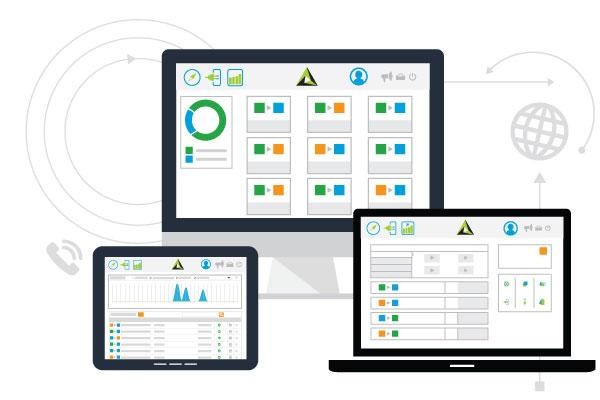
For quite a long time, enterprises, large or small, ran on legacy, on-premise solutions. Then, cloud computing took its place. Presently, enterprises use software solutions that are a combination of both. Nevertheless, cloud and on-premise applications must work in coalition to function efficiently, and it is carried out with the aid of application integration.
Enterprises use application integration services to allow sharing of processes as well as business data among various applications across the ecosystem. Integrating on-premise with cloud applications not only play a central role in transforming but orchestrating the data needed for streamlining workflows and business operations. These applications can be of several types including CRM, e-commerce, finance, and ERP.
Application integration allows companies to integrate applications and systems that are critical for delivering a comprehensive view of a host of business workflows to offer superior customer experience, drive revenue and growth.
Applications created by multiple vendors do not communicate with each other and need technology to enable connectivity and transparent communication. The role of integration technology comes into play here. Integration platforms connect on-premise applications and SaaS applications with the organization's architecture, open communication patterns, and also get rid of the data silos that delay business processes.
Application Integration
Application integration is done in various ways. It can vary on the basis of data pattern, use case, and technology as well as resources. While for some companies point-to-point integration methods can be used to integrate their applications, others can employ an open-source approach to integration their in-built applications.
So, enterprises can employ application integration strategy that comprises methods such as the one-time move of application data, two-way synchronization or data processing which is on-demand to manage and monitor data flow among software applications and IT systems.
Some of the most common enterprise application approaches have been mentioned below.
SaaS Application Integration
Enterprises make use of a multitude of SaaS applications today. SaaS CRM such as Salesforce and NetSuite ERP are highly popular tools being used in organizations to boot. However, they must integrate these data management tools into their architecture to avoid back boxes and data silos. For this, NetSuite API integration or Salesforce integration methods can be used.
On-premise Application Integration
Companies can make use of an on-premise application such as a home-grown ERP that can be deployed either in the cloud or behind the firewall. Custom-coding approaches can be used for integrating these applications. Companies can also employ ESB, a middleware platform, for utilizing a rules engine to route as well as transform messages and foster healthy communication among applications.
Application-to-Application Integration
The application-to-application integration is preferred by enterprises that are in quest for achieving end-to-end processing and comprehensive visibility into mission-critical business processes. For example, companies that are planning to shift to e-commerce and build a digital store with the help of Magento or Shopify need to use application integration methods to integrate these applications for streamlining data flows. Application integration fuses automation and enhances organizational efficiency by getting rid of manual data intervention techniques. Whether Salesforce-SAP integration and Magento-NetSuite integration, integration solutions can optimize application-to-application workflows substantially.
Benefits
Application integration, whether Salesforce integration, NetSuite integration, or Magento integration, offers a number of benefits.
1. Streamlines Process Automation: Application integration platforms provide seamless handoff of data within applications, systems and workflows in order to support automation and efficiency. Developers or the IT teams can re-use mapping templates provided in the integration platform to save a lot of time for onboarding customers or partners. It also helps trigger application events and send alerts, allowing proactive troubleshooting and integrated communications.
2. Holistic Visibility: Application integration methods enable end-to-end integration that helps companies gain complete end-to-end visibility to track and monitor data workflows. In addition, these methods can strengthen companies' ability to deliver superior customer experiences by fulfilling their requirements and achieve a comprehensive view of business processes.
3. Scalability: Integration solutions by connecting applications and systems allow companies grow. Businesses don't need to start from scratch as they can use application connectors and mapping, allowing them to scale and drive business revenue.
Apart from this, application integration helps companies savor faster GTM and expedite the return on investment. Further, it enables enterprises handle multiple orders in real-time, enabling concurrent processing.




